Exploring Minnesota's Distinctive Features and Culture
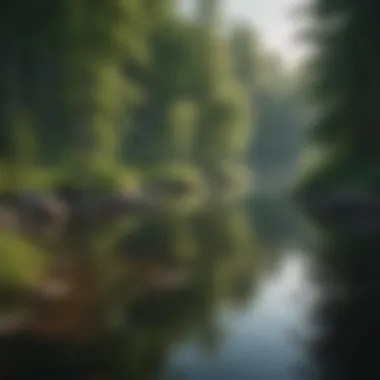
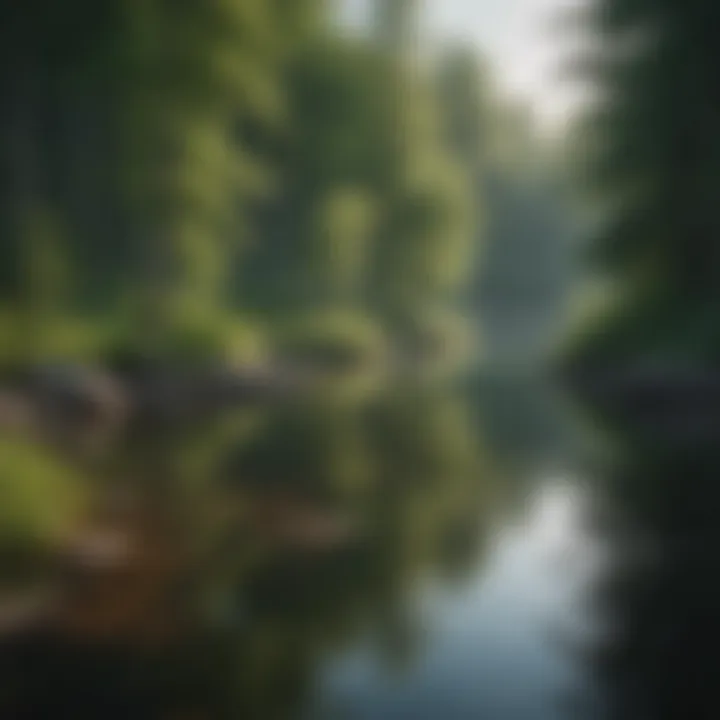
Nature Topic Overview
Minnesota is often referred to as the Land of 10,000 Lakes, but in reality, the state boasts over 11,000! This beautiful area is filled with lush forests, rolling prairies, and peaceful waterscapes, making it a treasure trove of natural wonders. The great outdoors is definitely one of Minnesota's most striking attributes.
From the towering pine trees of the north to the vibrant wildflowers scattered across the fields, the state's diverse ecosystems are home to a variety of wildlife. Minnesota's landscape is shaped by its unique geography, which includes scenic rivers and magnificent lakes, rich farmland, and stunning parks.
Key Points of Discussion
In this article, we will go on a journey through Minnesota's natural splendor, historical roots, and cultural vibrancy.
- Explore wildlife unique to this area.
- Learn interesting facts and trivia about Minnesota.
- Discover the importance of environmental awareness and conservation efforts.
- Engage in some hands-on DIY nature activities to enjoy with family or friends!
"Minnesota's natural beauty is something one must see to fully appreciate. Each season brings its own charm, from the crisp winters to the lush summers."
This exploration is designed to resonate with visitors and residents alike, igniting an appreciation for everything that makes Minnesota truly special.
Fun Facts and Trivia
Did you know that Minnesota has the largest lake that is entirely within one state? Lake Itasca is where the Mississippi River begins and is a popular spot for both education and adventure!
Here are some additional fun facts:
- Minnesota’s state bird is the common loon.
- The state flower is the pink and white lady's slipper, which blooms beautifully in spring.
- More than half of Minnesota is covered in forest.
- You can find the world's largest ball of twine in Brainerd, a quirky roadside attraction that’s fun for the whole family!
Visual elements such as maps of the lakes or pictures of the wildlife can help illustrate the rich landscape of Minnesota for young audiences. Including interactive features like quizzes can make learning about Minnesota’s uniqueness fun and engaging!
Wildlife Explorations
Minnesota is abundant in wildlife species. The state is home to creatures such as:
- Bald Eagles – The majestic symbol of the United States.
- Black Bears – These furry friends can often be spotted in the north woods.
- Timber Wolves – Lore and legends surround these fascinating animals.
- Loons – Known for their eerie calls on quiet lakes.
Plant life here is just as varied. For instance, the Jack Pine tree is an important part of the forest ecosystem, providing habitat for various species. Each habitat supports different plants and animals, creating a balanced chain of life.
Kids might enjoy participating in a wildlife scavenger hunt, drawing pictures of their favorite animals or plants that are native to Minnesota.
Environmental Awareness
Having so much natural beauty comes with responsibility. It’s important for everyone, especially young ones, to learn about conservation and sustainability. Protecting Minnesota's ecosystems is crucial for future generations.
- Avoid littering
- Recycle and reduce waste
- Participate in local cleanup efforts or tree planting events
Teaching children how to respect nature and contribute to its preservation can instill lasting values that benefit the environment.
DIY Nature Activities
Getting hands-on is a great way to appreciate Minnesota's rich natural heritage! Here are some fun activities to try at home or in the great outdoors:
- Create a Nature Journal: Draw or write about plants and animals you see. It’s a fantastic way to document your own explorations.
- Nature Collage: Gather leaves or flower petals and create a beautiful collage. This can help teach children about different species and their habitats.
- Outdoor Scavenger Hunt: Make a list of things to find, like a pine cone or a specific flower. This can encourage exploration and observation of the local environment.
Through these activities, kids, parents, and educators can truly connect with Minnesota's stunning landscapes.
This exploration into the unique attributes is just the beginning of discovering everything that makes Minnesota a special place for residents and visitors alike.
Geographical Landscape
The geographical landscape of Minnesota makes up a rich tapestry that is as varied as it is stunning. Renowned for its multitude of lakes and dense forests, the state is a true testament to nature's artistry. It's not just about pretty scenery—this landscape plays an essential role in shaping the culture, economy, and ecology of the region. Understanding what defines this landscape gives us insight into Minnesota's identity, helping to appreciate its significance beyond mere aesthetics.
Lakes and Waterways
Minnesota's waterways aren't just abundant; they are pivotal to the state’s ecosystem, economy, and recreational activities. The vast network of lakes and rivers offers a unique backdrop that has become synonymous with the state's identity.
Longevity of Lake Superior
Lake Superior, the largest freshwater lake by surface area, showcases its longevity through its profound ecological impact. A unique feature of this lake is its depth, reaching over 1,300 feet, which contributes to its ability to regulate temperature and support diverse marine life. This depth allows for stable ecosystems that thrive where warmer and colder waters meet.
Lakes like Superior help drive tourism in the area, providing activities from fishing to kayaking. The lake's long-term health matters because it affects everything surrounding it, from the water levels down to the local wildlife. However, challenges such as pollution and invasive species can impact its quality, presenting disadvantages that require ongoing conservation efforts.
Importance of the Mississippi River
The Mississippi River is not just a river; it's a vital artery for trade, cultural exchange, and wildlife. Spanning over 2,300 miles, it serves as a lifeline for communities and ecosystems alike. A major characteristic of the river is its historical significance, being an early transport route for settlers and a natural resource for many indigenous tribes.
Its expansive reach offers a variety of recreational options—boating, fishing, and bird-watching—attracting tourists and residents alike. Moreover, the river plays a crucial role in local agriculture by providing essential irrigation and drainage. However, pollution and habitat loss remain persistent challenges that impact both the river and its adjoining lands.
Role of wetlands in biodiversity
Wetlands in Minnesota are often overlooked, yet they hold a unique status in supporting biodiversity. These areas act as natural filters, purifying water while providing habitat for countless species. A striking characteristic of these wetlands is their ability to capture and store floodwaters, helping to prevent costly flooding in surrounding regions.
Wetlands are beneficial to the ecosystem, serving as nurseries for fish and habitats for migratory birds. The diverse flora in these regions not only enriches the landscape but also plays a significant role in ecological balance. However, development pressures and climate change create disadvantages, leading to significant wetland loss which threatens this vibrant community of life.
Forests and Natural Areas
Minnesota's forests represent some of the richest natural areas in the state, teeming with life and history. From towering pines to sprawling hardwoods, these forests create a habitat that’s not just picturesque but essential for biodiversity.
Tallgrass prairie ecosystems
Tallgrass prairies are a distinctive ecosystem found in Minnesota, filling the landscape with grasses that can reach over six feet tall. This ecosystem supports both plant and animal life that adapts uniquely to fire and drought conditions. Their importance lies in their role as a carbon sink and in supporting an array of species, including pollinators like bees and butterflies.
The unique feature of these prairies is their seasonal dynamics, which see vibrant blooms in the spring and summer, attracting insects and birds. However, these ecosystems face threats from agricultural expansion and development, leading to a decline in their vastness—a loss that echoes throughout the ecosystem.
Conservation efforts in the Boundary Waters
The Boundary Waters Canoe Area Wilderness is a prime example of conservation in action. This vast natural area is unique for its pristine lakes and waterways, untouched by major development, providing critical habitat for numerous species. The primary goal of conservation efforts is to maintain its ecological integrity while allowing for public enjoyment of its wild beauty.
Among the numerous advantages of this area is its ability to draw outdoor enthusiasts, offering a sanctuary for those looking to experience nature. Nevertheless, rising pressures from climate change and human activity pose risks that need constant attention, making conservation efforts more important than ever.
Flora and fauna of northern Minnesota
In northern Minnesota, the flora and fauna represent a thriving community specially adapted to the cooler climate. The area is rich in biodiversity, with species such as the majestic moose and the elusive timber wolf roaming its landscapes. Unique trees like the white cedar and the red pine flourish in this region, creating a distinctive forest tapestry.


The economic benefit of this biodiversity can't be understated, encouraging eco-tourism and creating a demand for sustainable practices. Yet, habitat fragmentation and changing climate conditions threaten these delicate ecosystems, presenting challenges that can ripple through the community.
Minnesota's geographical landscape is not just a backdrop; it’s a living part of what makes this state unique, influencing everything from community identity to health and sustainability.
Climate and Seasons
The climate and seasons in Minnesota are essential components that shape not only the environment but also the lifestyle of its residents. The state experiences four distinct seasons—spring, summer, autumn, and winter—each bringing its own flavor to the local culture, economy, and recreational activities. Understanding these climatic shifts can offer insight into why Minnesota is such a vibrant and diverse place. From snowy winters that bring a blanket of white to the bountiful beauty of summer blooms, the changing seasons create an ever-evolving backdrop for life in the Land of 10,000 Lakes.
Winter Wonderland
Impact on culture and recreation
Winter in Minnesota isn't just a season; it's a cultural phenomenon. The snowy months encourage activities that are woven into the fabric of Minnesotan life. Families bundle up and head outdoors, engaging in everything from ice skating on frozen lakes to snow sculpting competitions. This community participation fosters a sense of togetherness, as neighbors gather to enjoy recreation around bonfires and winter festivals.
The social aspect of winter activities can’t be overlooked.
Winter festivals, such as the St. Paul Winter Carnival, highlight not only the cold weather but the creative spirit and hardiness of the people. Whether one enjoys watching a parade or participating in a snowman-building contest, winter recreation in Minnesota offers countless opportunities to bond, creating lasting traditions.
Unique winter sports opportunities
Minnesota is a playground when it comes to winter sports. Beyond skiing and snowboarding, the state offers unique options like curling and ice fishing. Curling, sometimes referred to as "the roaring game," highlights strategy and teamwork, while ice fishing brings together friends and families for a day on the lake as they wait for a catch. This additional layer of sports diversity is one of the key highlights of Minnesota’s winter scene.
Individuals keen on winter sports have so many choices that boredom is simply not an option. However, it is worth mentioning that the harsh cold may not be suitable for everyone, and some may prefer indoor activities instead.
Adaptations of local wildlife
The wildlife in Minnesota displays incredible adaptations to survive winter’s chill. Animals like the snowshoe hare and white-tailed deer have thick fur coats that provide insulation against the cold. Some creatures, like the common loon, migrate south, while others prepare by fattening up in the fall.
These adaptations not only highlight nature's resilience but also present opportunities for local educational programs. Schools often host field trips during winter to observe wildlife in their natural habitats, teaching children about the importance of these adaptations. However, winter survival can be unforgiving, and many local animals face challenges, prompting wildlife conservation efforts across the state.
Seasonal Changes
Spring blooms and festivals
As the snow melts away, Minnesota springs into life with vibrant flowers and festive celebrations. Events like the annual May Day Parade are a visual feast, showcasing community art and creativity.
This season signals more than just warmer weather; it is a hopeful reminder of renewal and rebirth. Families begin planting gardens, while parks awaken with blooming flowers and blossoming trees. The stunning display of tulips at places like the Como Park Zoo and Conservatory attracts visitors from all over. However, spring can be unpredictable, with occasional late snows that remind everyone of winter's lingering grasp.
Summer outdoor activities
With long sunny days, summer stands out as a time for adventure in Minnesota. People flock to the state parks, enjoying kayaking on lakes and hiking through lush woodlands. Events like the Minnesota State Fair display the state’s agricultural achievements while offering amusement park rides and delicious local food.
The outdoor summer atmosphere encourages exploration and engagement. However, the humidity can be a bit overwhelming at times, testing the patience of even the most avid outdoor lovers.
Autumn foliage and harvest season
As summer fades, the vibrant reds, oranges, and yellows of autumn take center stage. Minnesota draws in tourists eager to see the fall foliage, with scenic drives in places like the North Shore of Lake Superior becoming particularly popular. During this time, local farms invite visitors to partake in harvest festivals, complete with hayrides and apple picking.
This celebration of nature’s bounty not only boosts local economies but also fosters a love for seasonal flavors, with pumpkin everything taking the spotlight. However, with the end of autumn comes the reminder of winter lurking just around the corner.
Cultural Heritage
Cultural heritage in Minnesota is a vibrant tapestry woven from the threads of various histories, customs, and traditions. It encompasses the legacy of the state’s Indigenous communities and the manifold influences brought by immigrant populations. This facet of Minnesota is not only crucial for understanding the state's identity but also enriches the life experiences of its residents and visitors alike. Exploring cultural heritage offers fascinating insights into how it shapes social norms and artistic expressions in Minnesota, while also promoting respect and appreciation for diversity.
Indigenous Peoples
Minnesota's Native American tribes
Minnesota is home to a complex mosaic of Native American tribes, each with its own distinct languages, customs, and traditions. The Dakota and Ojibwe tribes are among the most prominent groups. These tribes play a vital role in the state’s culture, often serving as custodians of historical knowledge about the land and its resources. The unique feature of these tribes is their deep connection to natural elements, which influences their practices and beliefs. The arts, music, and traditional storytelling are aspects very much highlighted in local festivals, giving communities a chance to share their rich history.
Historical significance of treaties
The historical significance of treaties signed between Indigenous tribes and the federal government is another important aspect. These agreements often stem from negotiations addressing land disputes and rights. They shape contemporary discussions about sovereignty and resource management. Understanding treaties illuminates the complexities of Minnesota’s past and present, revealing struggles even today. Their enduring legacy underscores ongoing dialogues regarding land rights and cultural preservation policies, making this a pivotal topic within this article.
Cultural contributions
Cultural contributions of Minnesota's Indigenous peoples extend beyond history. They manifest in art, literature, and social practices, enriching the broader cultural landscape. From handwoven baskets to vibrant beadwork, these artifacts not only represent craftsmanship but also carry stories of resilience and identity. Additionally, contemporary Indigenous artists and writers draw inspiration from their heritage, bridging past and present in their works. This blending not only highlights the unique perspectives of Indigenous cultures but also promotes ongoing discussions about cultural identity in Minnesota.
Immigrant Influences
Scandinavian heritage
Scandinavian heritage is one of the most notable influences in Minnesota. Immigrants from countries like Sweden and Norway settled extensively in the state, contributing to its development. Festivals celebrating this heritage, like the St. Paul Winter Carnival, showcase traditional foods, crafts, and music. The emphasis on community values found in this culture promotes social cohesion, making it a beneficial element of Minnesota's cultural heritage.
German and Irish settlers
German and Irish settlers also wielded considerable influence on Minnesota's growth and cultural evolution. These communities brought agricultural practices and traditions that continue to be significant today. The Oktoberfest celebrations highlight this heritage, honoring the customs and cuisine that enrich local culture. This connection provides a sense of belonging and cultural continuity, fostering pride among residents.
Contemporary multiculturalism
Contemporary multiculturalism in Minnesota is characterized by a seamless blend of various traditions. Current populations reflect diversity, including the contributions of African, Asian, and Hispanic communities. Urban centers like Minneapolis and St. Paul serve as melting pots, creating vibrant neighborhoods with restaurants, shops, and festivals celebrating these rich heritages. This multicultural aspect not only enhances social dynamics but also promotes understanding among different groups, ensuring that Minnesota remains a relevant case study in cultural confluence.
Understanding cultural heritage is fundamental to appreciating Minnesota's unique identity, with its intertwined stories and legacies shaping lives today.
Economic Foundations
Understanding the economic foundations of Minnesota sheds light on the state's varied influences and contributions, from its agricultural prowess to its advanced industrial sectors. These elements not only drive state revenue but also play a significant role in shaping the overall quality of life for its residents and the ecological health of the region. By exploring the effects of both farming and industry, we get a fuller picture of how Minnesota has crafted a robust economy that supports a diverse and thriving community.
Agricultural Contributions
Corn and soybean production
Corn and soybean farming stand as a backbone for Minnesota’s economy, playing a crucial role in both domestic and international markets. Corn is often considered one of the greatest crops due to its myriad uses in everything from animal feed to biofuels. Growing corn and soybeans is advantageous as they enrich the soil and support crop rotation—a practice that keeps the land healthy. However, over-reliance on these crops can lead to soil depletion and reduced biodiversity.
Here’s a look at some of the key points:
- Production levels: Minnesota consistently ranks among the top states for corn and soybean output.
- Economic impact: Farmers contribute significantly to the local economy, promoting rural development.
Benefits of this approach can be significant, although some challenges come along with monoculture practices. Managing this responsibly is crucial for sustained agricultural success.
Dairy farming practices
Dairy farming is another vital aspect of Minnesota's agricultural landscape. The state is known for producing high-quality milk, cheese, and other dairy products. This practice supports local economies by providing jobs in farming, processing, and distribution, ensuring that products reach consumers efficiently.
A unique characteristic of Minnesota's dairy segment is its focus on sustainable practices. Many farmers employ rotational grazing techniques that not only benefit animal health but also improve soil quality. Yet, maintaining this balance can be demanding, as weather fluctuations and market changes impact production rates.
- Key feature: Emphasizing local products helps build community connections.
- Advantage: Supports local economies and contributes to nutritional needs.
Despite its benefits, adhering to strict regulations for dairy quality and sustainability can be challenging.
Local farmers' markets
Farmers' markets serve as dynamic spaces where local agriculture can thrive. These markets promote not only fresh produce but also a connection between consumers and their food sources. They often showcase a range of products from fruits and vegetables to handmade goods, embodying the essence of community and local entrepreneurship.

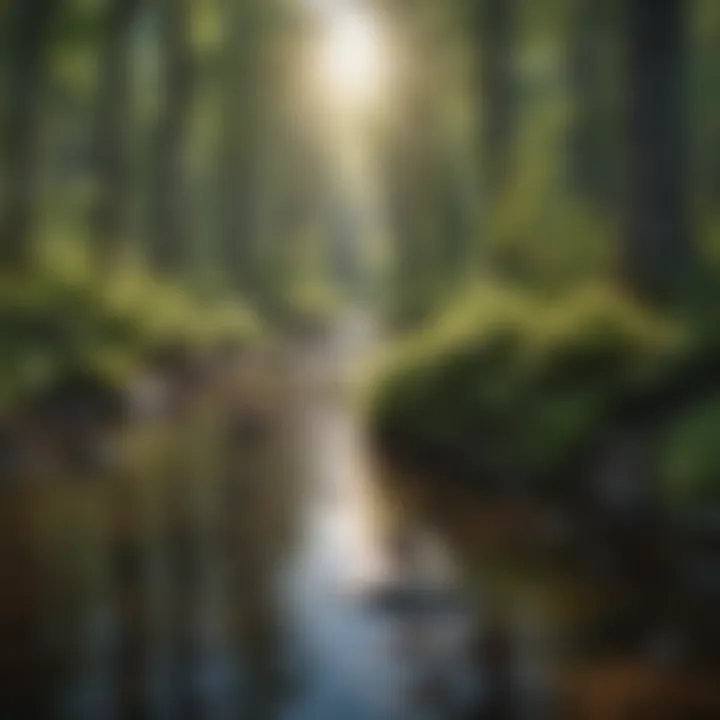
One standout feature of Minnesota's farmers' markets is their role in promoting seasonal eating, which encourages consumers to embrace the local harvest throughout various times of the year. Benefits include:
- Health advantages: Access to fresh, nutritious food.
- Economic support: Small farmers can achieve better prices compared to larger retail environments.
Nevertheless, the operation of these markets does face challenges, such as inconsistent weather affecting crop yields and varying consumer attendance rates.
Industrial Growth
Mining history and significance
Mining has been a cornerstone of Minnesota's industrial development. The state is rich in minerals, like iron ore, which has powered the nation's steel industry for decades. The Mesabi Range is particularly notable for its heavy production of iron and taconite, serving as a fundamental resource for not just Minnesota but the entire country’s industrial landscape.
The historical significance lies in how mining drove the establishment of many towns and communities. Key points include:
- Economic development: Creation of jobs and infrastructure.
- Cultural impact: A unique labor history that’s shaped family ties and community structure.
However, the environmental implications of mining practices has raised concerns, necessitating better policies to minimize ecological damage as the sector evolves.
Renewable energy initiatives
As the world shifts towards more sustainable practices, Minnesota is making significant strides in renewable energy initiatives. Solar and wind energy have taken hold in the state, showcasing a commitment to sustainability while also creating new job opportunities. This shift not only provides environmental benefits but contributes to energy independence, allowing residents to harness natural resources more effectively.
Notable aspects include:
- Job creation: New roles in installation and maintenance support local economies.
- State incentives: Programs that encourage renewable installations among homeowners.
Yet, balancing growth in this sector with existing energy needs remains a crucial consideration.
Technology sector development
In recent years, Minnesota’s technology sector has gained momentum. Cities like Minneapolis and Saint Paul are nurturing a vibrant tech scene, attracting startups and established firms alike. This growth is characterized by a focus on innovation and collaboration between universities and businesses.
Some highlights include:
- Growth in startups: Encouraging entrepreneurial spirit, particularly in health tech and software development.
- University partnerships: Strong ties with institutions such as the University of Minnesota foster research and development.
However, the rapid pace of change creates challenges for established industries, often requiring them to adapt or risk becoming obsolete.
The interplay between agriculture and industry in Minnesota presents a rich tapestry of economic opportunities and challenges, shaping the state's identity and future success.
Arts and Literature
Arts and literature play a significant role in shaping the identity and cultural fabric of Minnesota. The state boasts a rich tapestry of stories, performances, and artistic expressions that mirror its diverse population and history. Engaging with these creative outlets not only offers enjoyment but also provides insight into societal values, challenges, and aspirations. By highlighting the contributions of authors, institutions, and performances, this section aims to underscore Minnesota's artistic accomplishments and legacy.
Literary Origins
Contributions of Minnesota authors
Minnesota is home to a plethora of authors whose words resonate far beyond state lines. From the profound prose of F. Scott Fitzgerald, who beautifully captured the essence of the American Dream, to the whimsical tales of Laura Ingalls Wilder that have enchanted young hearts for generations, these writers embody unique perspectives. Their literary contributions foster a connection to the state’s culture and values, making them an essential part of any exploration of Minnesota.
The importance of Minnesota authors lies in their ability to weave stories that depict local landscapes, traditions, and the essence of Midwestern life. The character of their narratives often reflects resilience, humor, and a deep sense of community, enriching the literary world.
Unique feature: Many Minnesota authors have created works that blend personal experience with broader societal themes, offering readers both relatability and depth. This fusion encourages a thoughtful examination of one's surroundings and personal narrative, serving as an invitation for readers to engage with the complexities of modern life.
Legacy of literary landmarks
The state is full of literary landmarks where stories come alive. Places like the James J. Hill House, a grand structure with local literary significance, stand testament to the region's historical narratives. Likewise, the River City where Fitzgerald found his inspiration carved its own story of artistic expression.
By visiting these landmarks, lovers of literature can better grasp the influences that shaped literary giants. The legacy of these sites connects residents and visitors to the past, engaging them in a dialogue about historical and cultural evolution.
The unique feature of these landmarks is the way they can transport visitors into the lives of the authors, providing an immersive experience that reveals how their environments influenced their works. It is an opportunity for reflection and exploration, making them valuable assets for any arts and literature discourse.
Literature festivals and readings
Minnesota's vibrant literary scene shines during events like the Minnesota Book Festival, where authors meet readers, fostering connections and inspiring young writers. These gatherings are not only a gathering point for established figures but also a springboard for emerging voices.
The key characteristic of these festivals is accessibility: they open the gates wide for everyone, encouraging individuals of all backgrounds to explore literature, whether as readers or aspiring writers. Such events nourish a reading culture, which is instrumental in developing critical thinking and creativity at a young age.
Whether a local or out-of-towner, anyone attending these events can feel the excitement and energy of words being shared. Festivals often include workshops and readings, covering genres from poetry to historical fiction, appealing to a broad spectrum of interests.
Cultural Institutions
Impact of the Guthrie Theater
The Guthrie Theater stands out as a preeminent cultural institution in Minnesota, known for its innovative productions and community outreach. As a hub for performance art, it plays a crucial role in shaping the artistic landscape of the state. Its commitment to presenting a diverse range of performances not only entertains but also educates audiences about various cultures and viewpoints.
The impact of the Guthrie is evident in how it nurtures local talent while attracting national and international artists. This blend creates a rich dialogue between different forms of art, making theater accessible and relevant in the modern world.
The unique feature of the Guthrie is its striking architecture, which offers stunning views of the Mississippi River, inviting audiences into a space where art and nature converge. This architectural beauty contributes to the overall experience, enhancing the appreciation of the arts.
Minnesota Orchestra's global reach
The Minnesota Orchestra represents a shining beacon of musical excellence, captivating audiences locally and internationally. The ensemble's dedication to innovation and collaboration has led to valuable partnerships, bringing a diverse array of musical styles to the forefront.
The global reach of the Minnesota Orchestra highlights how Minnesota's artistic pursuits extend beyond state borders. By touring internationally and featuring guest artists from around the world, they showcase the state's commitment to cultural exchange and artistic growth.
A unique aspect of the Minnesota Orchestra is its outreach programs designed to engage younger audiences. These initiatives help foster an appreciation for classical music, instilling an ongoing respect for the arts in future generations.
Art museums and galleries
Minnesota boasts a diverse collection of art museums and galleries that enrich its cultural identity, showcasing everything from Indigenous art to contemporary installations. The Walker Art Center is particularly notable, being a hub for modern art and design that attracts both locals and tourists.
The benefit of these institutions lies in their ability to spark conversations that challenge perceptions and encourage introspection. Exhibitions often present artworks in the context of societal issues, making art an accessible means of exploring relevant topics.
A unique feature of the state's art scene is the collaborative spirit exhibited by institutions. Many galleries offer community-based projects, fostering a sense of ownership over the artistic discourse. This involvement not only supports local artists but also cultivates a deeper bond between the audience and the art itself.
Recreational Opportunities
Recreational opportunities in Minnesota are not just pastimes; they are integral to its cultural identity and the well-being of its residents. The state’s vast natural beauty and diverse landscapes offer something for everyone — from outdoor enthusiasts to families looking to spend quality time together. Whether it’s a serene day by the lake or an adrenaline-pumping winter sport, Minnesota's recreation scene has its roots deeply planted in its environment and community spirit.
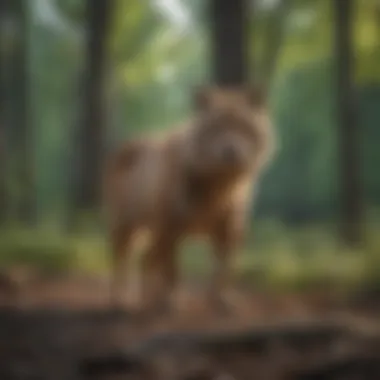
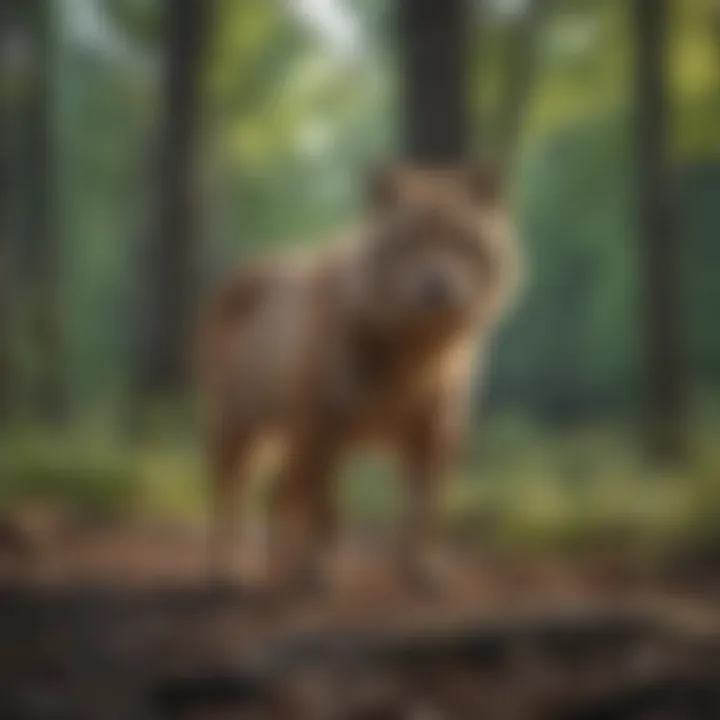
State Parks and Outdoor Activities
Congregating together in nature fosters a sense of belonging and tranquility. Minnesota’s system of state parks and the various outdoor activities available enhance this connection. Here’s a closer look at some of the most engaging outdoor activities:
Canoeing in the BWCA
Canoeing in the Boundary Waters Canoe Area Wilderness (BWCA) is an experience like no other. Perhaps one of the most enchanting aspects of canoeing in this area is the sheer solitude it offers. Paddling through crystal-clear lakes surrounded by tall pines can feel almost meditative.
The BWCA has over a thousand lakes and streams, making it a prime spot for adventurous spirits. A unique feature of this area lies in its designated non-motorized zones, allowing for a truly peaceful experience away from any motorboats. One could find themselves gliding past untouched shorelines while encountering deer, beavers, and myriad bird species. This makes canoeing not just a means of recreation but also a chance to immerse oneself in nature. However, the challenge lies in planning a trip that includes food, gear, and navigating the often-unpredictable weather conditions.
Hiking Trails Across the State
Hiking trails across Minnesota present a variety of experiences, from gentle strolls to more challenging treks. The state boasts an extensive network of trails, each winding through different terrains and offering glimpses of diverse flora and fauna.
One of the most loved features is the North Shore of Lake Superior Trail, where stunning views of the water meet lush green hills. A key aspect of hiking here is its accessibility — many trails are family-friendly, allowing young adventurers to join in without feeling overwhelmed. Hiking is not just good exercise; it promotes bonding with family or friends while also providing opportunities to engage with the environment. On the flip side, some trails can be rugged and may require advanced planning, which could deter novice hikers.
Camping and Wildlife Observation
Camping in Minnesota is yet another fantastic way to connect with the outdoors. The state offers countless campgrounds, from established ones with amenities to wild camping for the more adventurous. Wildlife observation is often part of the joy of camping, with opportunities to spot everything from eagles to foxes.
One unique feature of camping here is the ability to choose from various ecosystems, whether it be forests, prairies, or lakeshore settings. It allows campers to experience the rich biodiversity of the area fully. The feeling of waking up to the sounds of chirping birds and rustling leaves can be enchanting. However, prospective campers should consider obtaining the right permits and preparing carefully to protect this natural beauty from overuse, ensuring that future generations can enjoy it as much as we do.
Winter Sports and Activities
When winter blankets Minnesota, recreational opportunities don't dwindle; they snowball into a wonderland of activities. Winter sports here are taken very seriously, merging adventure with tradition and creating special experiences that can be enjoyed by all ages.
Skiing in the North
Skiing in northern Minnesota is a well-loved activity as the state boasts numerous ski resorts tailored for everyone from beginners to seasoned pros. The Lutsen Mountains, for instance, offer picturesque slopes that delight both downhill and cross-country skiers.
A standout characteristic of skiing here is the breathtaking scenery that adds a unique flair to each run down the slope. Many trails are groomed frequently, ensuring they cater to a wide range of skill levels. However, the winters can be harsh and may require skiers to prepare adequately for cold weather, which might be daunting for some.
Snowmobiling Trails
Snowmobiling trails crisscross Minnesota, offering thrilling adventures in the deep snow. Popular trails like those found in the Caribou Highlands provide miles of open routes for snowmobiles, making it a popular choice among enthusiasts looking for speed and excitement.
The unique feature of snowmobiling is the ability to travel faster across snow-covered terrain, allowing riders to explore vast scenic areas quickly. The camaraderie among snowmobilers can create a wonderful social experience. Conversely, safety precautions and proper maintenance of the machines are vital to ensure everyone has a good time without mishaps.
Ice Fishing Traditions
Ice fishing might not catch everyone's eye at first, but in Minnesota, it’s a revered tradition brought to life each winter. Lakes freeze over, turning many into venues for social gatherings and peaceful reflection. Families and friends set up cozy tents, share stories, and attempt to catch fish like northern pike or walleye, which are plentiful in these iced-over lakes.
What sets ice fishing apart is the gentle pace of the activity; it’s as much about the experience as it is about the catch. However, it requires knowledge of safety practices like checking ice thickness and bringing the right equipment for success, which can vary widely among the lakes.
"Minnesota’s recreational opportunities embody the heart of its lifestyle and community — they connect people to each other and the land in meaningful ways."
Minnesota generously offers a multitude of recreational activities through its parks, forests, and lakes, encouraging exploration of its natural beauty. This diversity not only enhances the quality of life for residents but also cultivates an appreciation for the environment among visitors, making the state a true outdoor paradise.
Education and Innovation
Education in Minnesota is not just about classrooms and textbooks; it's about fostering creativity, collaboration, and a spirit of discovery. This state boasts a myriad of educational institutions ranging from large universities to small private colleges and vocational programs. Each element contributes to a vibrant intellectual environment that supports innovation and economic growth. A focus on both education and innovation propels Minnesota into the spotlight, with unique programs and partnerships driving success.
Higher Education Institutions
University of Minnesota's research initiatives
The University of Minnesota stands as a pivotal institution in the realm of research. Known for its diverse research initiatives, it undertakes projects that not only impact local communities but also contribute globally. A notable aspect is its interdisciplinary approach, merging fields like health sciences, agriculture, and technology. This cross-collaboration fosters a pool of discoveries that set precedents.
One key characteristic of the University's research is the emphasis on real-world applications. Researchers don't just publish papers; they aim to create solutions. For example, initiatives in sustainable agriculture help local farmers reduce waste while promoting environmental health. This practical focus makes it a beneficial choice for students and the broader community alike.
However, one must keep in mind that the complexity of these initiatives can also present challenges. Ensuring that findings reach the communities that need them requires effective communication and adaptation. The balance between theoretical research and everyday usability is something the university continuously strives to achieve.
Role of private colleges
Private colleges in Minnesota add a distinctive voice to the educational landscape. These institutions often emphasize personalized learning experiences, allowing students to engage more closely with faculty and each other. A uniform trait among these colleges is their commitment to liberal arts education, which fosters critical thinking and creativity.
One of the main advantages of these smaller colleges is their agility in curriculum development. They can swiftly adapt to emerging job markets and technology trends. For instance, many private colleges now blend traditional academics with modern technology, guaranteeing that students leave equipped with the skills for today’s workforce.
On the flip side of the coin, private colleges can sometimes be under financial strain compared to their public counterparts. Their reliance on tuition and donations means they must continuously innovate in fundraising and marketing.
Vocational training programs
Minnesota’s vocational training programs stand out for their hands-on approach, directly tying education to employment. These programs are specifically designed to equip students with the practical skills required in various trades, from healthcare to engineering. The focus on immediate job readiness makes these programs particularly relevant in a fast-moving economy.
A distinguishing feature of vocational training in Minnesota is its robust partnerships with local businesses. This connection ensures that the training aligns with the needs of the local workforce, and students often find jobs before even graduating.
However, some argue that such a focus may limit broader academic pursuits. Students sometimes worry that choosing vocational training could box them into specific fields, which might contradict personal aspirations for wider education.
Innovation Hubs
Startups and new technologies
The entrepreneurial spirit in Minnesota stretches from urban centers to small towns, fueled by a growing number of startups and innovative technologies. Notably, the health technology sector has gained momentum, with many companies spearheading advancements that improve patient care and streamline healthcare delivery.
One distinctive characteristic of Minnesota’s startup culture is the collaborative atmosphere. Many innovators connect through networks that encourage sharing ideas and resources. This sense of community creates a fertile ground for sustainable growth, making it a favorable environment for new ventures.
Nonetheless, with such a competitive market, startups may face challenges in securing funding and resources. The pressure can sometimes lead to a high rate of attrition.
Partnerships between industries and universities
Collaborations between industries and universities in Minnesota have become a hallmark of the state’s innovation capacity. These partnerships cultivate a blend of theoretical knowledge and practical application, allowing students to engage in real-world projects.
A key characteristic of these partnerships is the emphasis on co-creation. Companies collaborate with educational institutions, streamlining curriculum development based on industry needs. This relationship not only benefits students but also enriches the companies with fresh perspectives from young innovators.
However, aligning curricula with rapidly changing industry demands is not without difficulties. Constant evolution on both sides requires ongoing communication and a willingness to adapt.
Focus on sustainability and environmental science
Minnesota is increasingly recognized for its commitment to sustainability and environmental science. Educational institutions lead the charge, integrating sustainability practices into their curriculums and research efforts.
This focus manifests in programs that train students in renewable energy, conservation, and sustainable agriculture. The unique feature of this push lies in fostering a culture of environmental stewardship. This ensures that future generations are not just informed but are also motivated to enact positive environmental changes.
However, navigating the complexities of sustainability can be tricky. It demands a balance between technological advances and environmental ethics, something that institutions must continuously assess to stay relevant.
The synergy between education and innovation in Minnesota provides a blueprint for growth, ensuring that both students and industry are well-prepared for the future.







